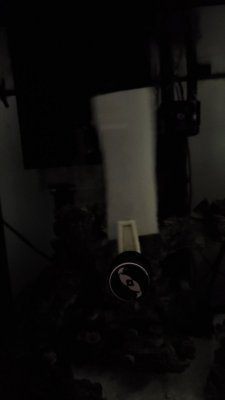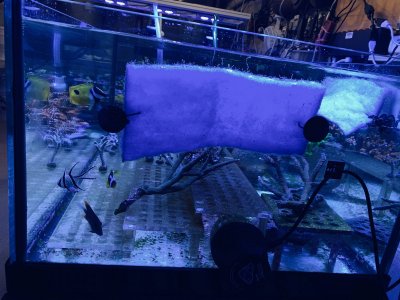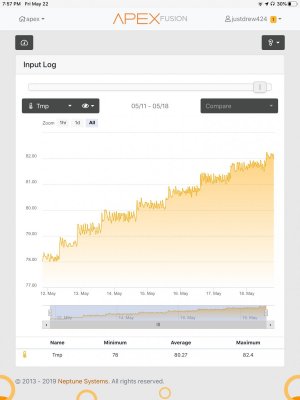- Joined
- Nov 23, 2019
- Messages
- 1,539
- Reaction score
- 979
Interesting it explains why it took me 4 full bottles of neophos to bring the levels above 0, i was starting to think my hanna test kit was bugged lolHere is my Dinos theory for why dinoflagellates are more difficult now:
So last night, I decided to look up what several old school reefing books and blogs said about dealing with Dinos. Almost all initially say its a fairly rare thing, and shouldn't really pop up. Then they go on to say that if you do get them that you should limit your nutrient intake, the same way they'd recommend dealing with most other algae issues. Below is a compilation of the different suggestions commonly used in the "old school methods" by the greats such as Bob Fenner, Anthony Calfo, RHF, Leonard Ho, SonnyX, etc.
https://reefs.com/2011/03/16/how-i-beat-dinoflagellates-and-the-lessons-i-learned/
http://reefkeeping.com/issues/2006-11/rhf/index.php#11
http://reefsite.com/2015/01/dinoflagellates-and-the-treament-of/
These 7 are almost always recommended:
These bottom 3 are recommended on most publications after 2010, but in early 2000's I don't see these mentioned:
- Run granular activated carbon (GAC) to remove as much of these toxins as possible
- 3 day black-out. Make sure to aggressively run your protein skimmer (or use air pumps) during this time as oxygen levels can get dangerously low.
- Several large water changes
- Manually removal: Siphoning off any dinoflagellates you can find, in addition to siphoning the sand bed. A 10 micron filter sock can be installed in the sump to catch fine particulates if not doing a water change.
- Reduce photo period and/or intensity & run only blues or actinics.
- Feed conservatively to keep nutrient levels low.
- Use Kalkwasser for supplementation, ideally maintain pH above 8.4 with kalkwasser.
I find this to be obviously mostly different from the treatment methods that are primarily suggested now. Which is primarily keep PO4 and NO3 elevated above zero, ideally through dosing (feeding is ok sometimes too) to keep PO4 0.5-0.2ppm~ and NO3 2-20ppm~. This is the main recommendation from what I can see. This in addition to adding good bacteria for bio diversity, maybe run a UV, maybe do a blackout, run carbon, etc.
- For two weeks after the second water change, I added hydrogen peroxide (3% h202 solution commonly sold in supermarkets) at a rate of 1ml per 10 gallon per day, ozone or UV sterilizers would serve the same purpose.
- Dose DIY Zeo Coral Snow daily (Calcium Carbonate https://www.reef2reef.com/threads/diy-kz-coral-snow-with-97purity.211722/ ) This is a flocculent to help bind and remove the free floating Dino’s. - Turkey bast the rocks and sand to get as many dinos free floating as possible so they get bound to the Calcium Carbonate slurry. Turkey Baster combined with the blackout was key to getting the dinos free floating so they could bind to the "Coral Snow".
- Add good bacteria (MB7, Dr Tims, Seachem Stability, etc)
The main difference is how nutrients are handled:
Old school tank set up: Go slow! Established live rock, live sand, slowly add fish, slowly add corals (NO SPS until after year 1). Filtration was 1-2lbs+ of live rock per gallon (even if mostly in the sump), and a skimmer, carbon, simple set ups.
New school tank set up: dry dead rock, dry or live sand, add bacteria and pure ammonia, fish added quickly, any corals added quickly, skimmer, filter roller and/or socks, GFO, Carbon, tons of bio media (matrix, bricks, etc), refugiums/ATS/Chaeto Reactors, Supplements, etc from the start.
The main thing I’m noticing is that not only are new tanks not starting with established live rock, they are also usually running all of the equipment you would want to add into your system later on when nutrient levels begin to rise above levels that you find easy to manage naturally.
Live rock might of reached “full saturation” of phosphate, while new/dry rock and bio media still hasn’t reached saturation yet.
TL; DR:
My main theory is that because dry rock & sand hasn't reached full phosphate saturation, that is (COULD be) the problem we have with dinos. It may be worthwhile to load up the new rocks with phosphate during the cycle to prevent this from happening. Old tanks used to be much more stable and bacteria, coralline algae, and diversity is usually what is talked about. That makes sense, and they are obvious things to think about, however I think MAYBE phosphate saturation of the rocks and sand should probably be part of this conversation.
I haven't really tested this theory, but to me it seems to be one of the main missing factors in this dinos equation.





















